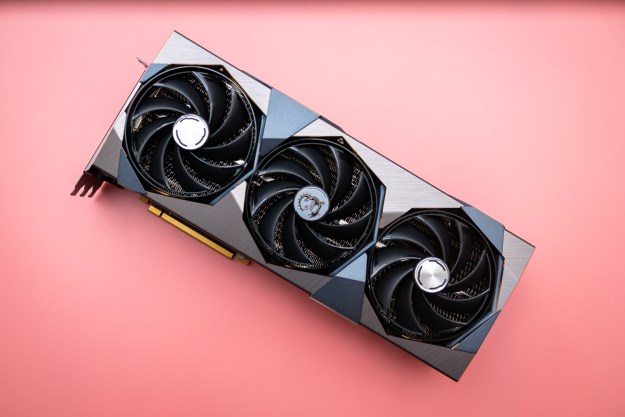
Android and Chrome OS may be Google’s best-known software ventures, but the company is actually working on a third operating system. It’s called Fuchsia, and when it was first discovered in 2017, it only popped up as a single command line. Now, however, we know a lot more about the operating system.
Fuchsia looks totally different than any other mobile operating system we’ve seen, including Android, but that could be the point. The fact is that there’s currently a ton of mystery surrounding the operating system. We don’t know what it’s for, if it’s aimed at eventually replacing Android, if it’s just an experiment by Google, or when we should expect to see the new OS at Google I/O.
Updates
Here you’ll find the latest news on Fuschia OS. If you’re after a more general overview of Google’s developing OS, then skip down.
Fuschia confirmed to support Android apps
“What will happen to Android?” is one of the major questions asked of Google’s Fuschia. It’s entirely possible Google intends for Fuschia to replace
The news comes courtesy of news sites that noticed a new file had been added to the Android Open Source Project. The file concerns the addition of a special version of ART to Fuschia. ART — or
What exactly is Fuchsia?
Fuchsia is a little different from Android and Chrome OS in that it’s not based on Linux. Instead, it’s based on a new Google-developed kernel called Magenta. According to Google, Magenta is aimed at “modern phones and modern personal computers,” so it wouldn’t be surprising to one day see Fuchsia appear on our smartphones. Not only that, but Google has even added Apple’s programming language, Swift, to the operating system — though we don’t know why just yet.
Because Fuchsia is written using the Flutter SDK, which runs on Android, chunks of Fuchsia can be run on an
You can also drag recent apps around and drop them where you choose to organize and personalize the home screen. If you drop one app on top of another, you’ll enter a split-screen mode with up to three apps.
According to Hacker News, Travis Geiselbrech, who worked on NewOS, BeOS, Danger, Palm’s WebOS, and iOS, and Brian Swetland, who also worked on BeOS and Android, are involved in this project.
What is Fuchsia for?
The fact is that we just don’t know what Fuchsia is being built for just yet. The latest report from Bloomberg posits that Fuchsia is a new attempt to unite the entire Google ecosphere under a single operating system, with the goal for Fuchsia being to run smartphones, smart speakers, laptops — anything that could possibly fit under Google’s tech umbrella. According to a certain source, the plan is to have Fuchsia up and running on smart speakers and other smart home devices within the next three years, and then move on to larger devices like laptops, before eventually superseding Android as the world’s largest mobile OS.
The idea that Fuchsia would replace Android is one that’s been around for a while, and Ars Technica has an interesting take on this. As it notes,
However, it’s likely that abandoning Android is a long way off yet — if it happens at all. Google CEO Sundar Pichai and deputy Hiroshi Lockheimer have yet to sign off on any sort of future plan for Fuchsia, and it’s clear that such a change would be an enormous undertaking. Many huge manufacturers like Samsung, HTC, and LG depend on
Chances are we won’t find out anything new for a while since Fuchsia OS is early in development. Google has tested the new OS on phones, and we know that it’s now also testing it on the Pixelbook too and other laptops too. We’ll update this article as we hear more.
Rumored Fuchsia features
What advantages could moving to Fuchsia have for Google? Many, as it turns out. As we’ve already mentioned, Android was originally built to power digital cameras, before being adapted into an OS for touchscreen phones. As a result, much of
Fuchsia would also have a more robust set of security features than Android, with encrypted user keys being built into the software to tighten security. Fuchsia would also be better than
Of course, Fuchsia is still deep in early development, and don’t be surprised if some of these details change over time. According to Bloomberg’s report, there have already been conflicts within Google over Fuchsia’s security measures, as they would make it harder for Google’s advertising.
Try out Fuchsia for yourself
As of early May, you can actually try out Fuchsia for yourself. SlashGear, in partnership with HotFix Computer Repair, has put together a downloadable Android Package Kit (APK) that you can install on your phone to check out the OS. The APK is kind of like a preview version of a launcher of the alpha version of what’s currently dubbed Armadillo. Armadillo is basically the version code name for Fuchsia, which is the operating system — kind of like Nougat, which is the version name, for the OS known as
Head over to HotFixIt to download it for yourself, but before you do keep a few things in mind. Fuchsia is currently in its very early days, and as such don’t expect to be able to use it as your daily OS. While it should be relatively safe to use on most Android phones, you should generally only download the highly experimental software if you know what you’re doing.
Updated January 3, 2019: We’ve added the latest news that Fuchsia will be able to run Android apps.
Editors' Recommendations
- Why you need to be excited about the Google Pixel 8a
- 5 phones you should buy instead of the Google Pixel 8
- Whatever you do, don’t buy the Google Pixel 7a right now
- When will Apple release iOS 18? Here’s what we know
- This Google Pixel 8a leak just spoiled everything about the phone




